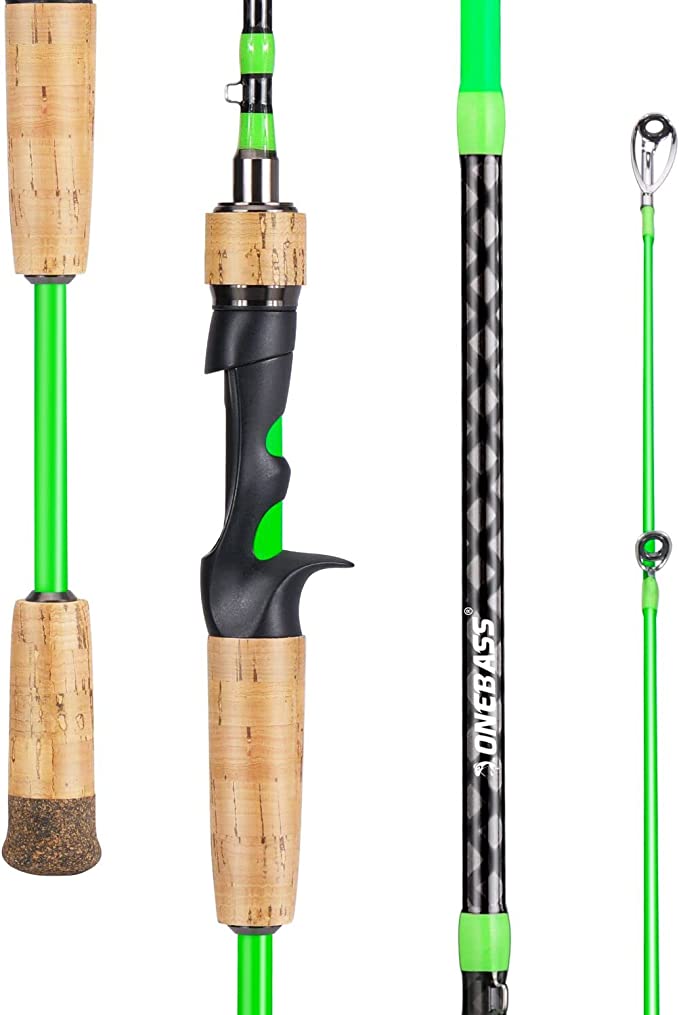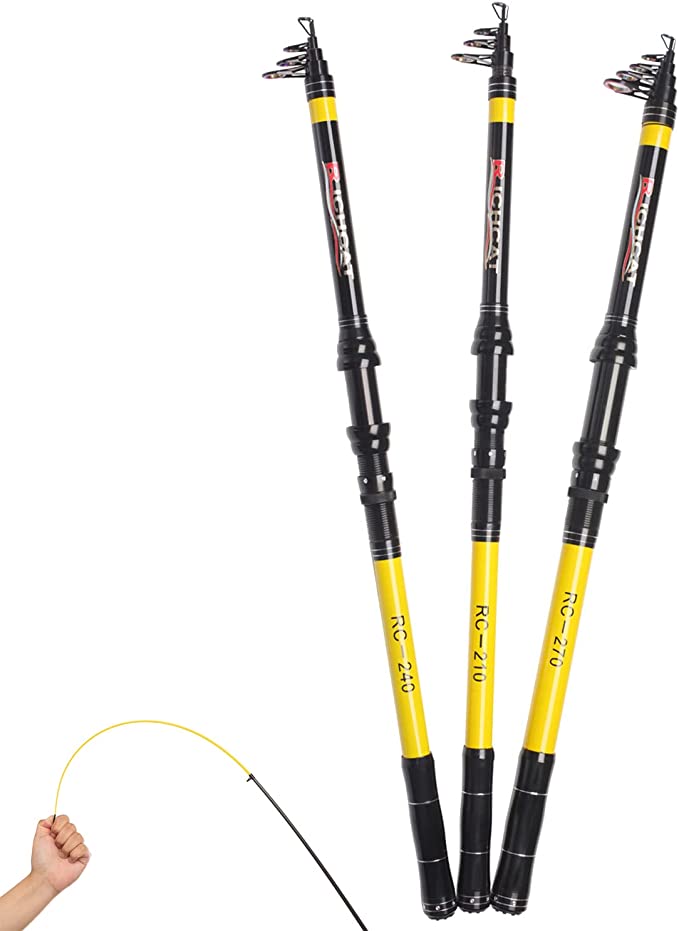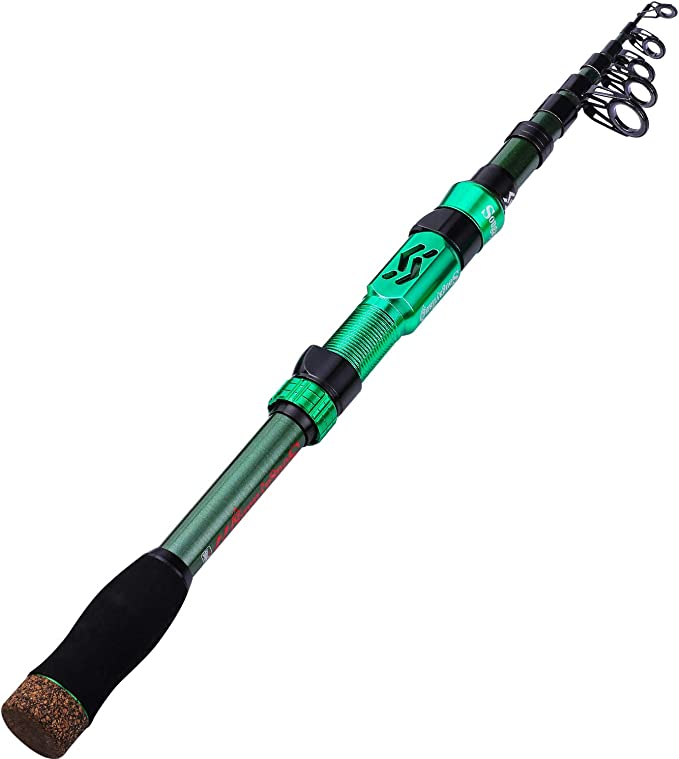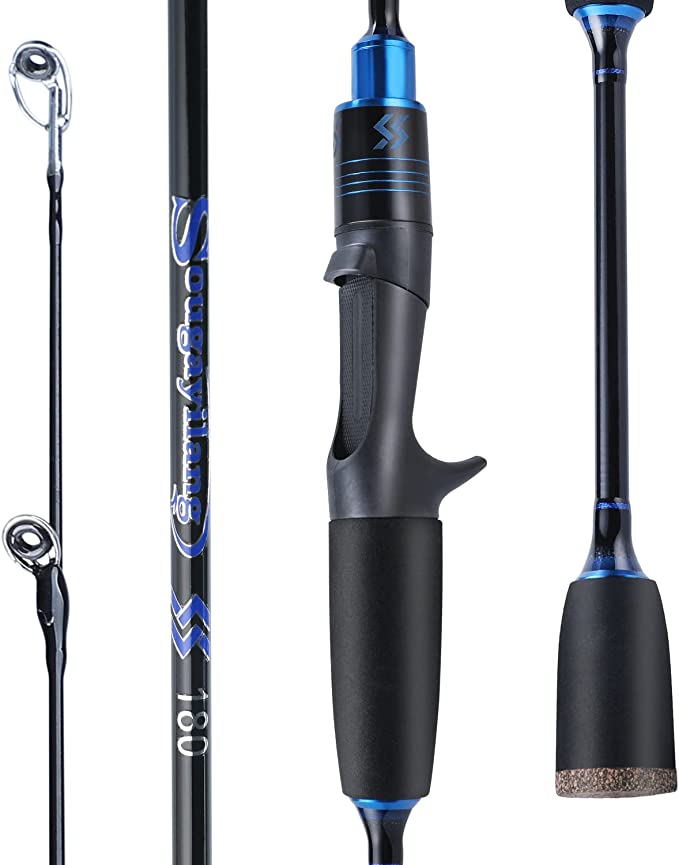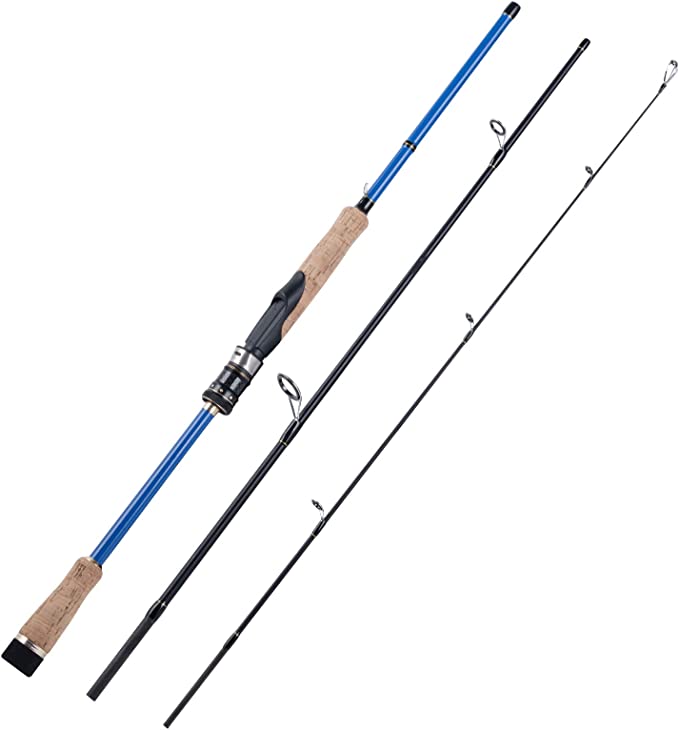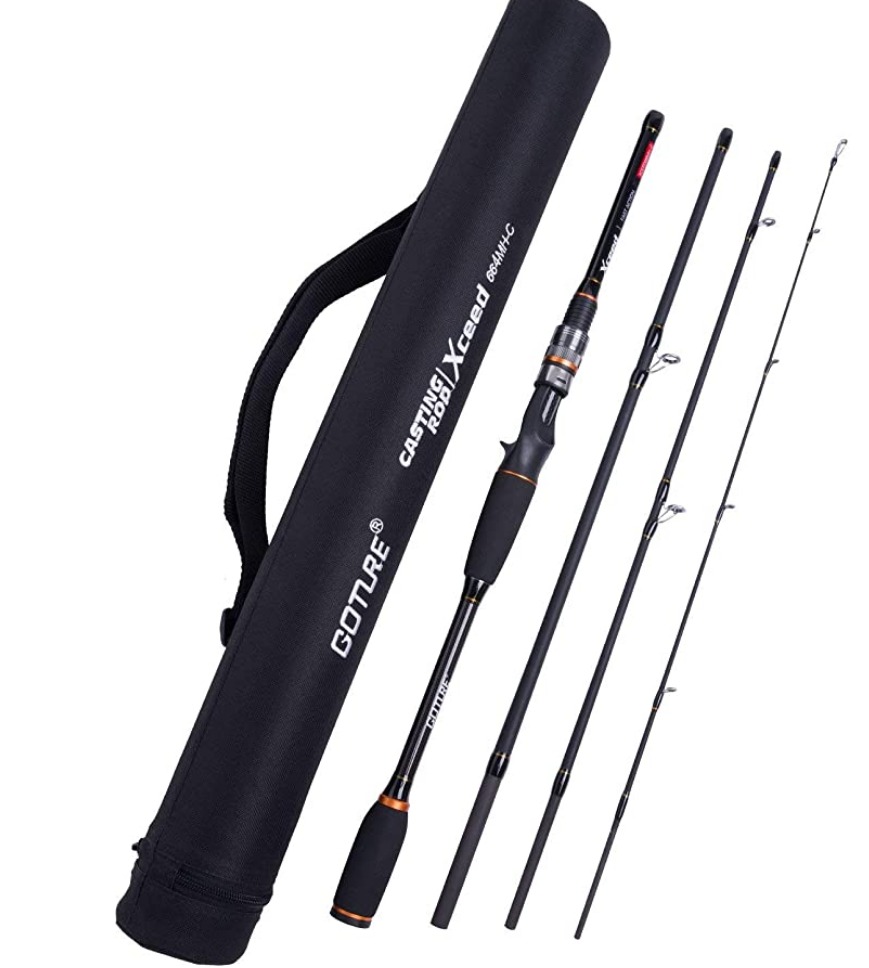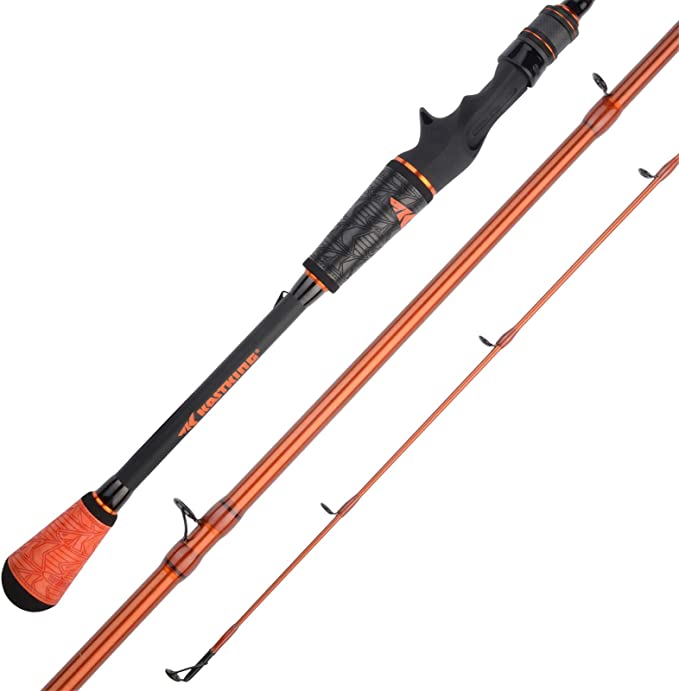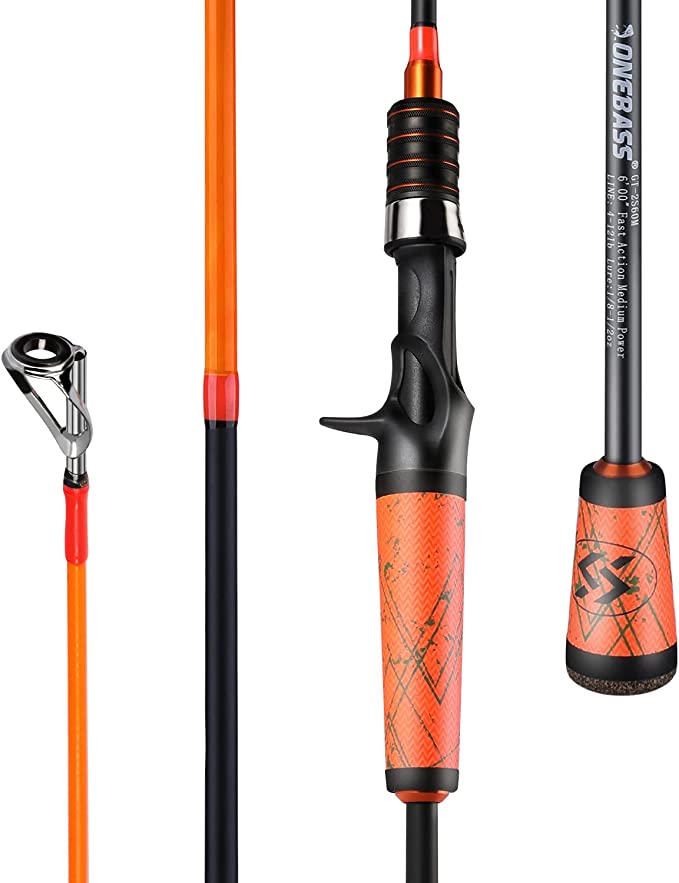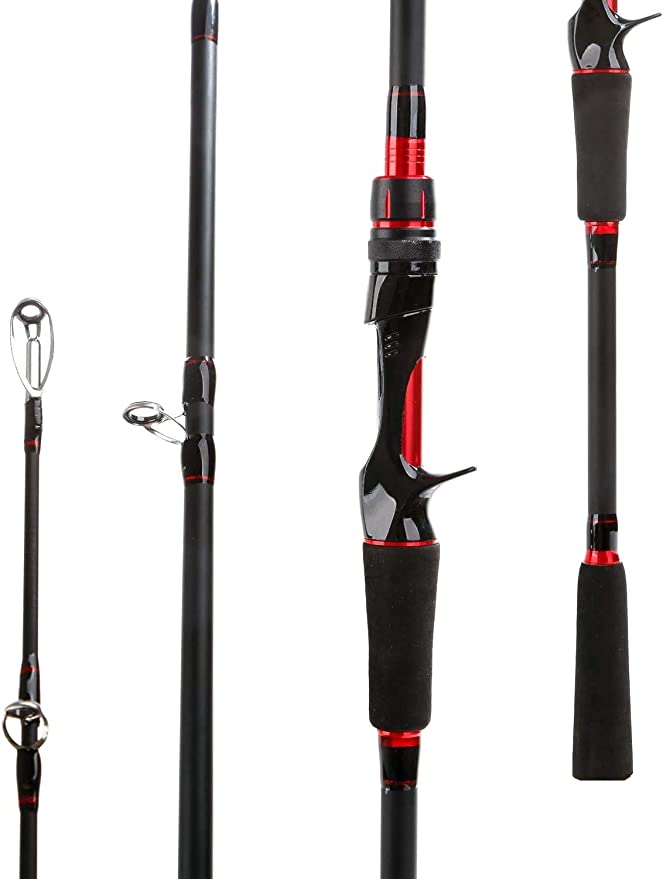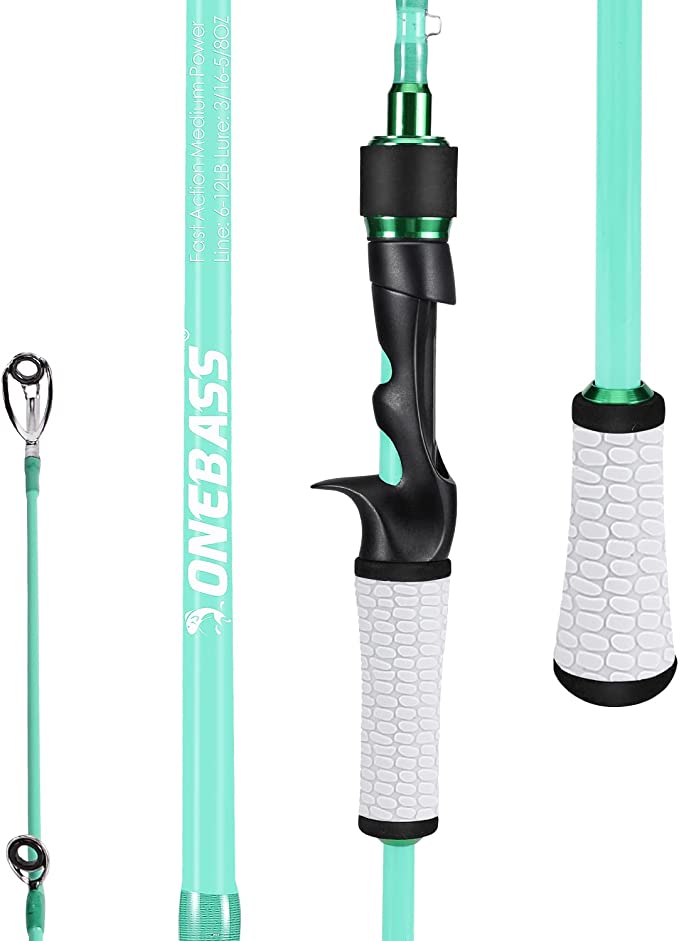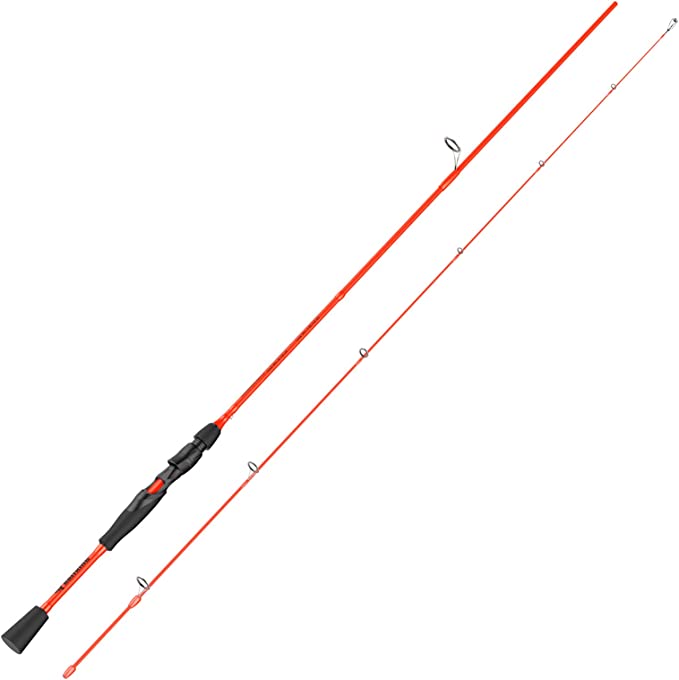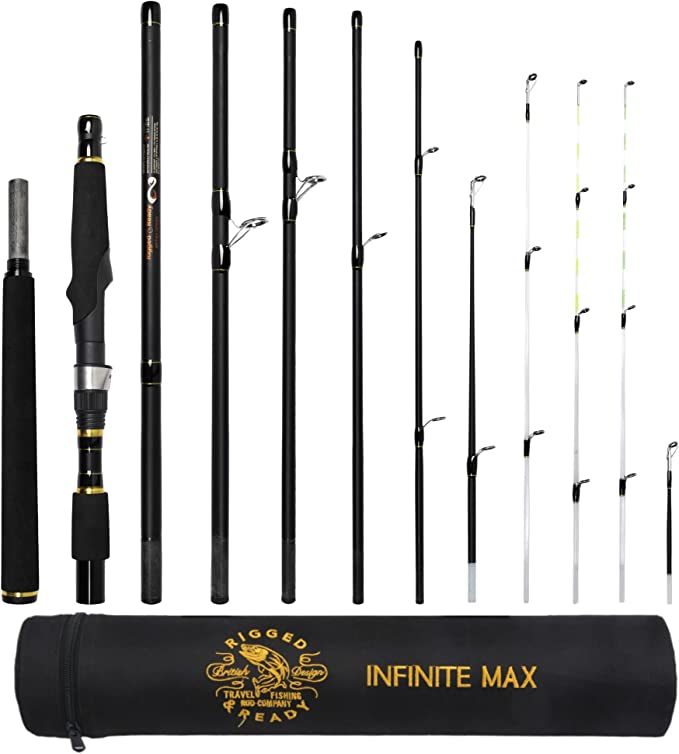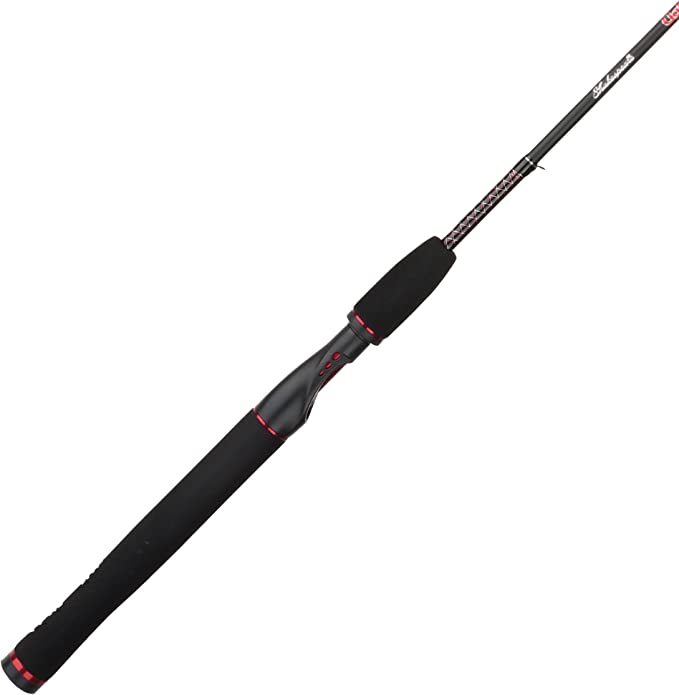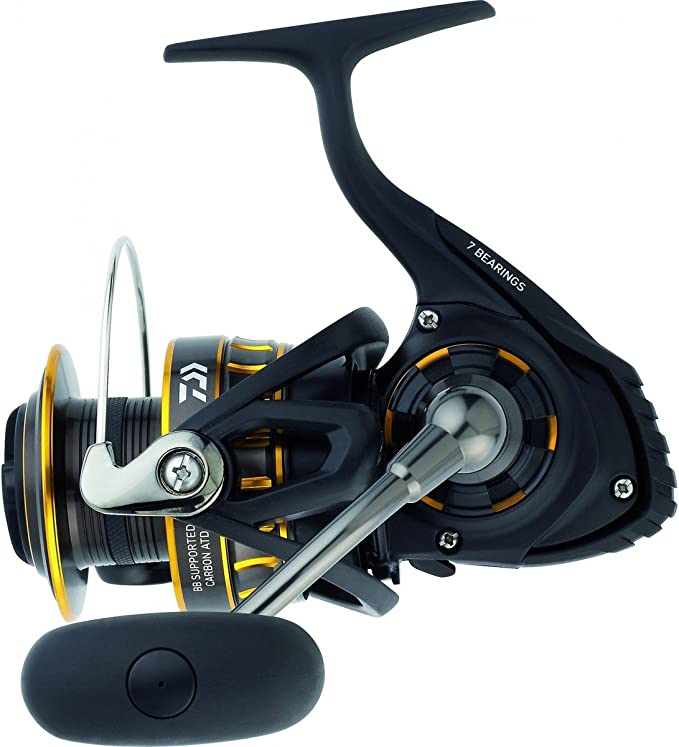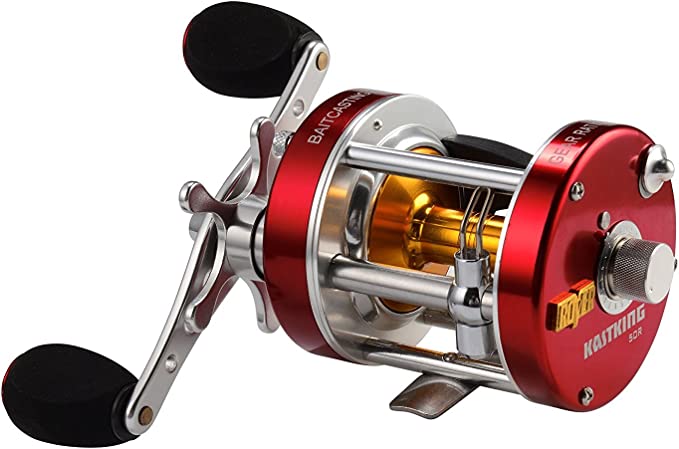The Soul of the Rod: Unraveling the Science Behind Your Fishing Gear
Update on Aug. 1, 2025, 2:09 p.m.
There’s a moment every angler lives for. It’s not the explosive strike or the screaming drag. It’s quieter than that. It’s the phantom tap. The almost imperceptible tick-tick that travels up the line, through the rod, and into your hand, signaling that something alive is mouthing your lure sixty feet away in the murky depths. Have you ever felt it and wondered, how? How does this simple stick translate such a subtle event into a clear message?
The answer isn’t magic. It’s a beautiful symphony of physics and materials science, an unseen engineering ballet perfected over decades. To understand it, we don’t need to look at a $1,000 flagship model. In fact, let’s take a widely accessible rod, like the Sougayilang Ultra-Light, as our classroom. On its product page, we find a curious puzzle: it claims to be made of “Glass Fiber” and also praises its “Carbon Fibre” construction. This isn’t a mistake; it’s the first clue to unraveling the soul of a modern fishing rod.
The Ghost in the Machine: A Brief History of What We Fish With
Before we solve that puzzle, let’s appreciate the shoulders our modern rods stand on. For centuries, anglers used what nature provided—supple wood or split cane bamboo, meticulously crafted into functional, often beautiful, tools. Then came the mid-20th century and the fiberglass revolution. These new rods were revolutionary; they were incredibly durable, almost unbreakable compared to their organic predecessors, and could be mass-produced. They had a deep, parabolic bend and a forgiving nature, but they were also heavy, whippy, and lacked a certain crispness. They were the dependable family sedans of the fishing world.
Then, in the 1970s, everything changed again. Aerospace technology trickled down to the fishing industry in the form of graphite, or more accurately, carbon fiber. These new black rods were electric. They were impossibly light, stiff, and transmitted vibrations with a clarity that was simply astonishing. Anglers could now feel things they never knew were happening. This was the sports car—fast, responsive, and exhilarating.
The Carbon-Glass Compromise: Solving the Material Mystery
This brings us back to our Sougayilang and its dual identity. Is it carbon or glass? The most likely answer is: both. This is known as a composite blank. In the quest to create a rod that is both affordable and high-performing, engineers masterfully blend these two materials.
Imagine building a rod blank. You start by wrapping sheets of material around a steel mandrel. In a composite design, the inner layers might be tough, cost-effective fiberglass, providing a durable core and backbone. Then, the outer layers are made from sensitive, lightweight carbon fiber. This strategic layering gives you the best of both worlds: the resilience of fiberglass to absorb shock and prevent catastrophic failure, combined with the stiffness and low weight of carbon fiber for sensitivity and casting performance. It’s a brilliant engineering trade-off, and it’s the secret behind nearly every high-value rod on the market today.
[Diagram: A simplified cross-section of a composite rod blank, showing an inner layer labeled "Fiberglass (Durability Core)" and an outer layer labeled "Carbon Fiber (Sensitivity & Stiffness)"]
The Language of the Bend: Decoding Power and Action
Now that we understand the material, let’s decipher its behavior. The specifications tell us this rod has “Ultra-Light” Power and “Fast” Action. These two terms are the most crucial—and most commonly confused—descriptors of a rod’s performance.
Power is the rod’s brute strength, its lifting ability. Think of it as a weightlifter’s class. An “Ultra-Light” (UL) power rating means the rod is designed to handle very light line (e.g., 2-6 lbs) and cast feather-light lures. It doesn’t have the muscle to pull a big bass out of heavy weeds, but it has the finesse to protect fine line from breaking and to allow a small fish to put up a thrilling fight.
Action, on the other hand, describes the rod’s personality. It’s not how much it bends, but where it bends along its length. A “Fast” action rod bends primarily in its upper third, near the tip. This has profound implications for the angler:
- Sensitivity: Because the bottom two-thirds of the rod remain relatively stiff, vibrations have a more direct and uninterrupted path to your hand. It’s like a taut wire versus a slack one.
- Hook-Setting Speed: When you sweep the rod to set the hook, you are only moving that flexible tip section. The transfer of energy is immediate and efficient, perfect for the hard mouths of many freshwater species.
To visualize this, think of a fast-action rod as a fencer’s foil: quick, precise, with most of the action happening at the tip. A slow-action rod, which bends in a deep parabolic curve almost to the handle, is like a bullwhip: it generates a slower, more powerful, looping energy. For feeling the subtle world of finesse fishing, the fencer’s foil is what you want.
[Diagram: Three rods under load. The "Fast Action" rod bends only near the tip. The "Moderate Action" rod bends to the halfway point. The "Slow Action" rod bends in a deep 'C' shape almost to the handle.]
The Human Connection: Where Science Meets Feel
A rod is useless without an angler, and the interface between the two is just as critical. The product description mentions both a “Cork Handle” and “Ethylene Vinyl Acetate” (EVA) foam. Cork, a natural material, is prized for being lightweight and an excellent transmitter of vibration, though it can get dirty. EVA is a dense foam that is more durable, easier to clean, and provides a firm grip. The choice often comes down to cost and angler preference.
These components are not just passive parts. The guides, for instance, are more than just line-holders. The “Stainless Steel” frame provides the structure, but the critical element is the smooth ceramic insert inside. This slick ring minimizes friction, allowing for longer casts and preventing line wear.
It’s the sum of these parts—an ultra-light power, a fast action, a composite blank, and functional components—that opens the door to advanced techniques. User reviews frequently mention using this type of rod for the Bait Finesse System (BFS), a method of using a casting reel to throw ultralight lures. This is only possible with a rod that has a fast, forgiving tip that can load up (bend) under the minuscule weight of a 1/16 oz jig, proving once again how intentional design creates new possibilities on the water.
Conclusion: Beyond the Brand Name
In the end, a fishing rod is a remarkable tool. It’s a lever for setting a hook, a spring for launching a lure, and an antenna for receiving signals from an unseen world. It is a system of purposeful trade-offs, engineered to perform a specific task within a specific budget.
By understanding the science—the compromise of materials, the physics of the bend, the function of each component—you are no longer just a consumer choosing a product. You are an angler making an informed decision. You can now look at any rod, whether it costs $27 or $700, and begin to understand its soul. And that knowledge, that deeper connection to your gear, is a phantom tap in itself—a signal of a more rewarding and successful experience to come.
